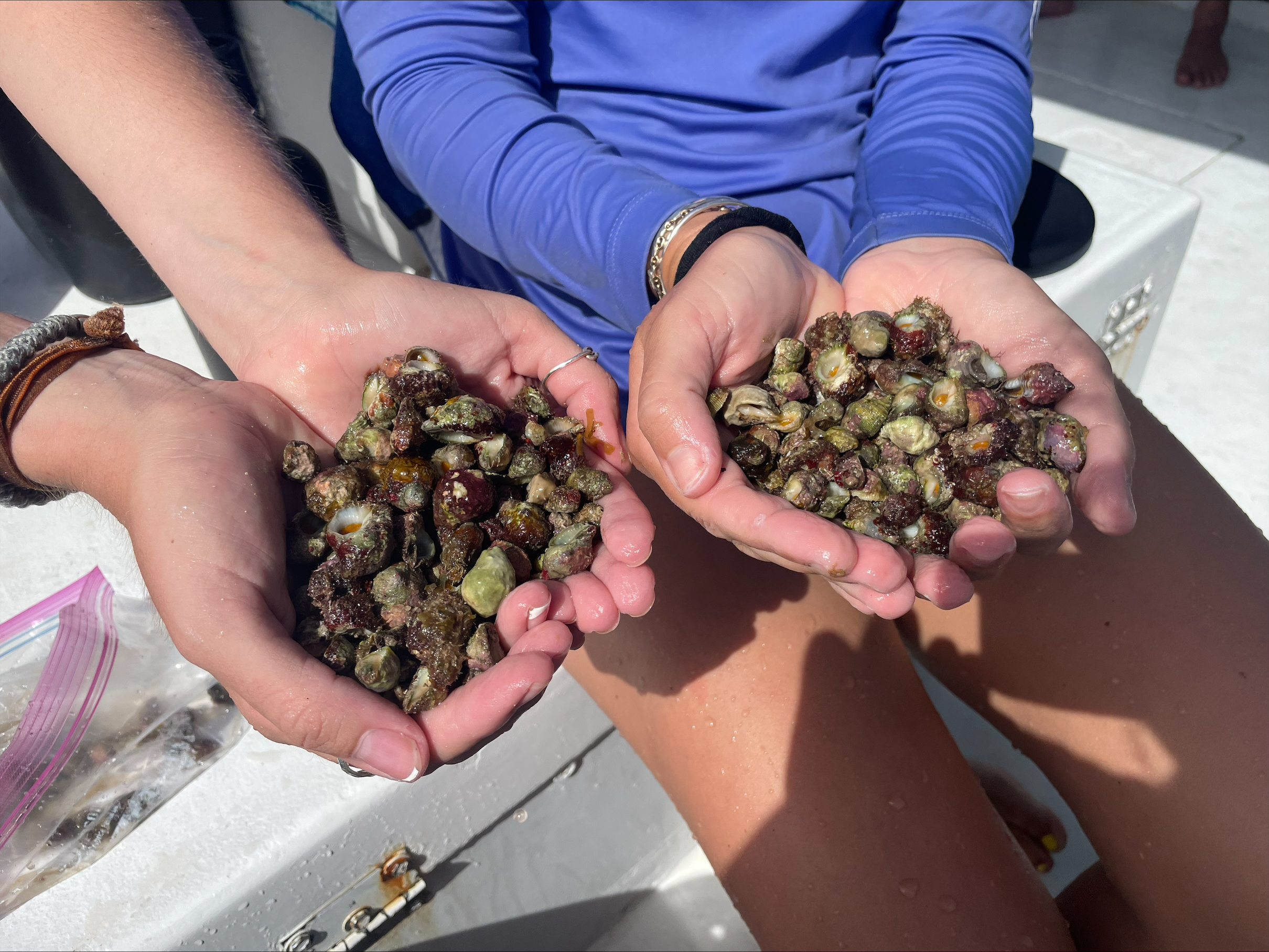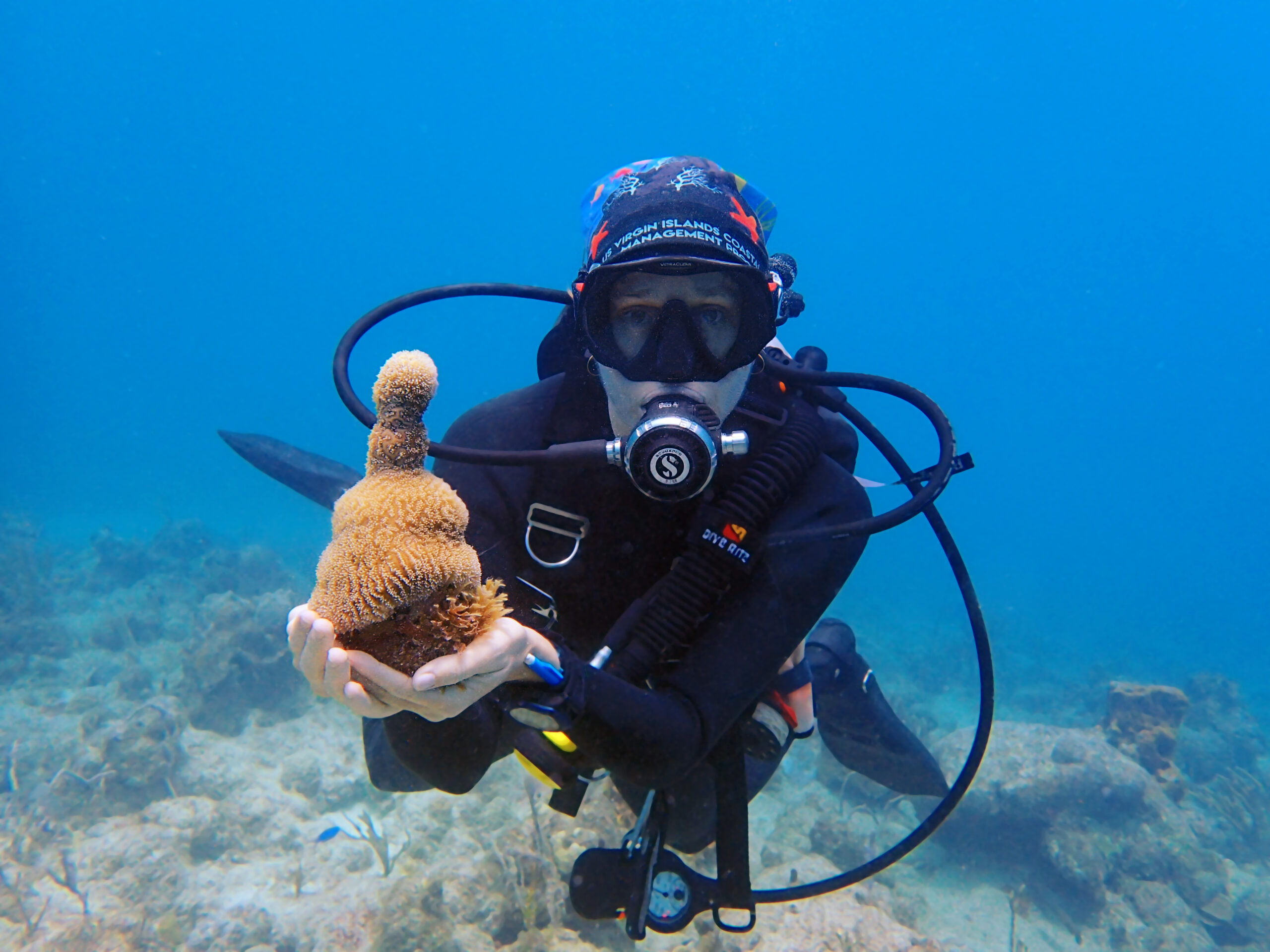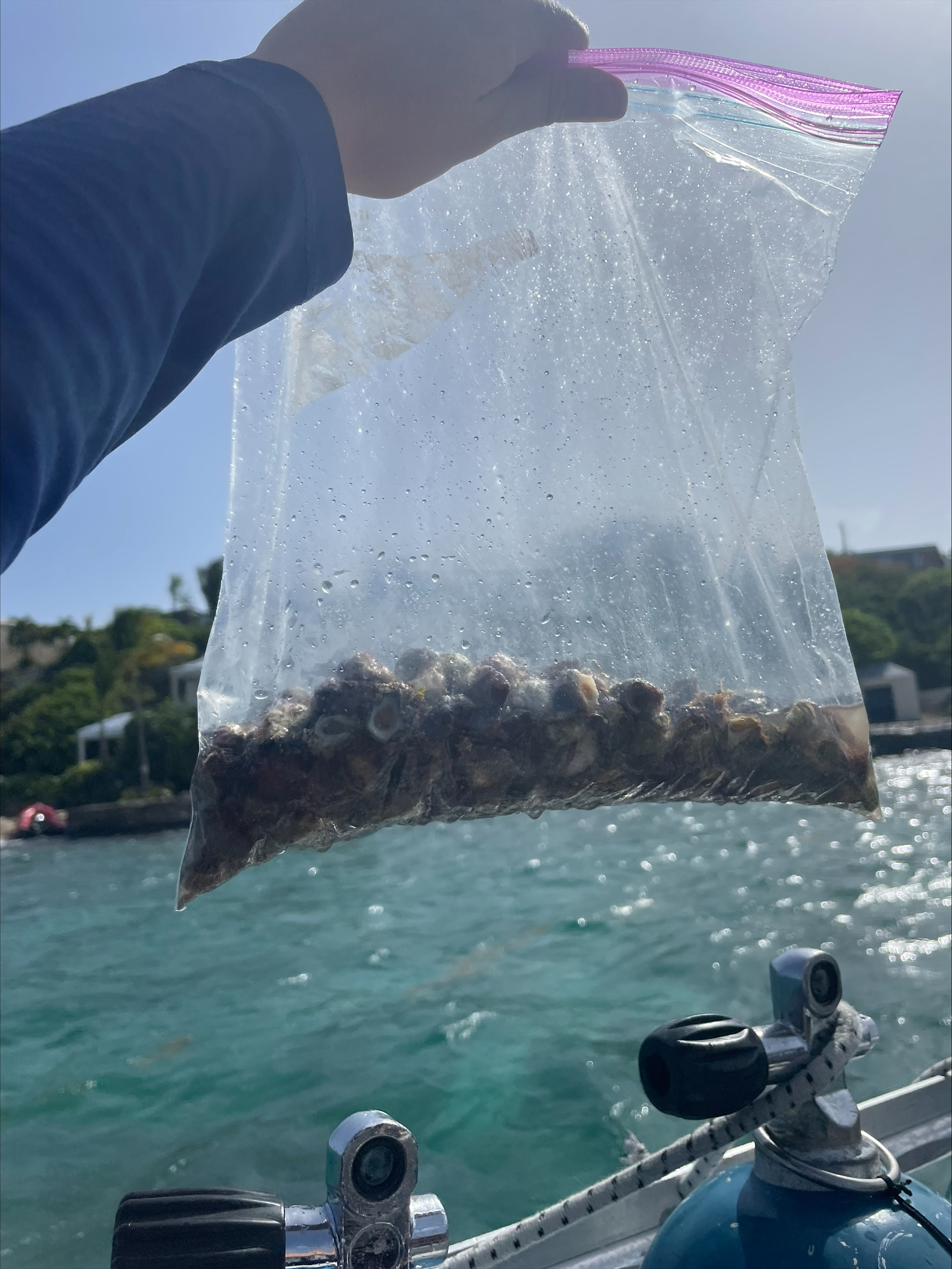In the four years since Stony Coral Tissue Loss Disease (SCTLD) suddenly appeared and then swept through the USVI like wildfire, the highly virulent and destructive disease has begun to subside — but not for a good reason.
“We are seeing less and less evidence of SCTLD on USVI reefs. While that may sound like a positive thing, it is likely largely because in the years since SCTLD first arrived, many stony corals have died, leaving fewer to infect in the future,” says Erin Bowman, coral management fellow in the Department of Planning and Natural Resources.

(Photo courtesy of Ceiba Strategies LLC)
SCTLD has exacted the heaviest toll on reef-building “stony” corals, which account for about half of the coral species found in the USVI. The disease attacks a coral’s colorful live tissues, killing the polyps and exposing the bright white skeleton underneath. Total mortality usually occurs within a matter of weeks, even for large coral colonies. Because of SCTLD, iconic species like brain and pillar corals are now rarely seen alive on the reefs.
For several years, “Strike Teams” of trained divers have worked to combat SCTLD through direct application of antibiotic treatment to infected corals. Although these treatments are very effective at stopping the progression of SCTLD on individual coral colonies, interventions on this level have not been enough to prevent the huge population losses that have now impacted SCTLD transmission.

“As SCTLD begins to enter the endemic phase — meaning it is slowly transitioning to background levels — there are less infected corals for the Strike Teams to treat,” says DPNR Coral Disease Response and Restoration Coordinator Courtney Tierney. “The few corals that remain may be genetically resistant, which our local partners are currently researching.”
In response to the decline in new SCTLD infections, the territory is adjusting its disease response strategy. Over the summer, DPNR directed the Strike Teams operating in territorial waters to expand their intervention tactics to help ensure the health of the stony corals that remain. This includes conducting rescues of highly susceptible coral species to land-based holding facilities, removing fast-growing algae that outcompete corals for space on the reef, collecting and reattaching loose coral fragments, and removing snails and fireworms that prey on corals.

Strike Teams organized by Ceiba Strategies, LLC and Sea Ventures, Inc., which conduct monthly SCTLD treatment dives in St. Thomas and St. Croix, each began implementing the new intervention protocols in August. The territory hopes the results will lead to the creation of best practices for other organizations fighting SCTLD.





